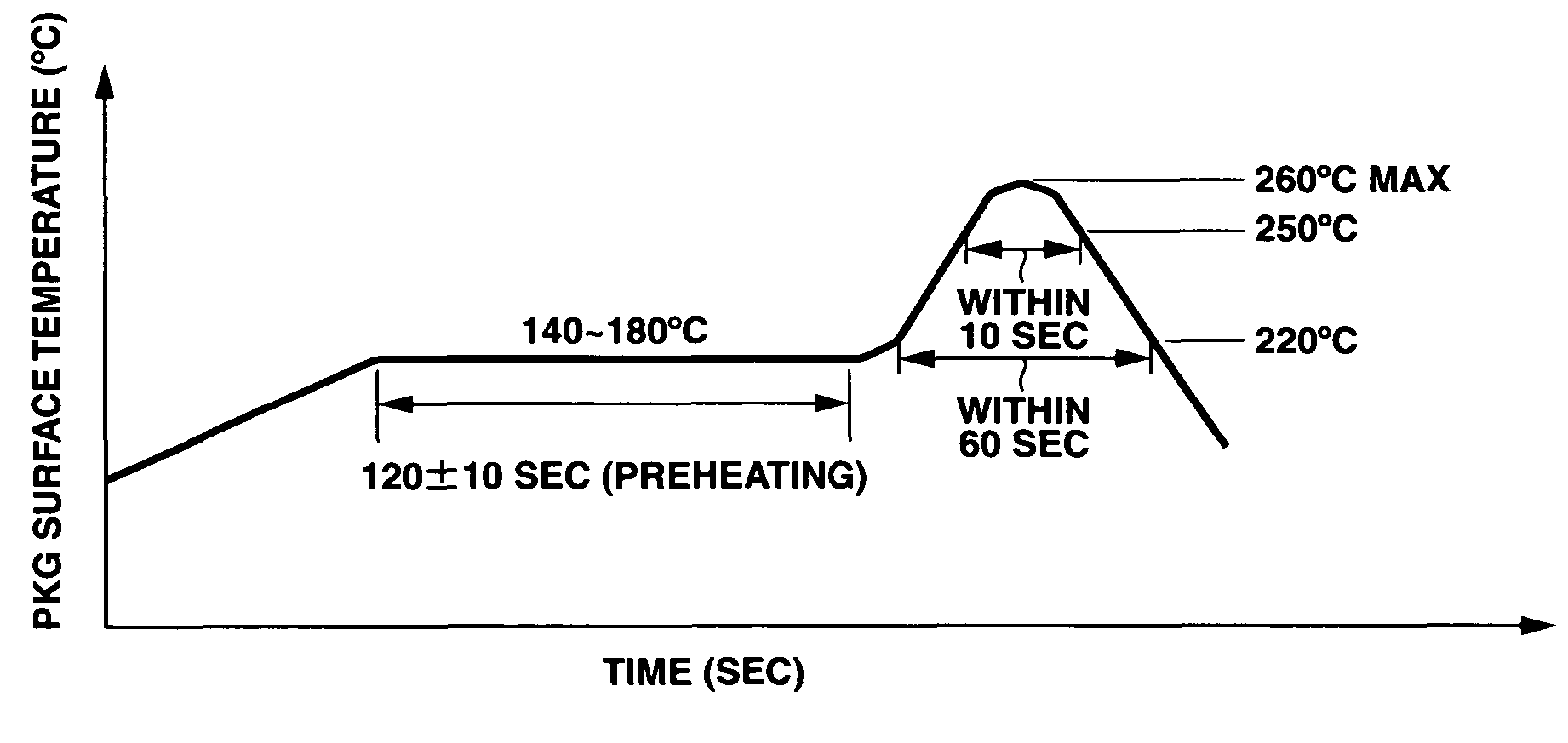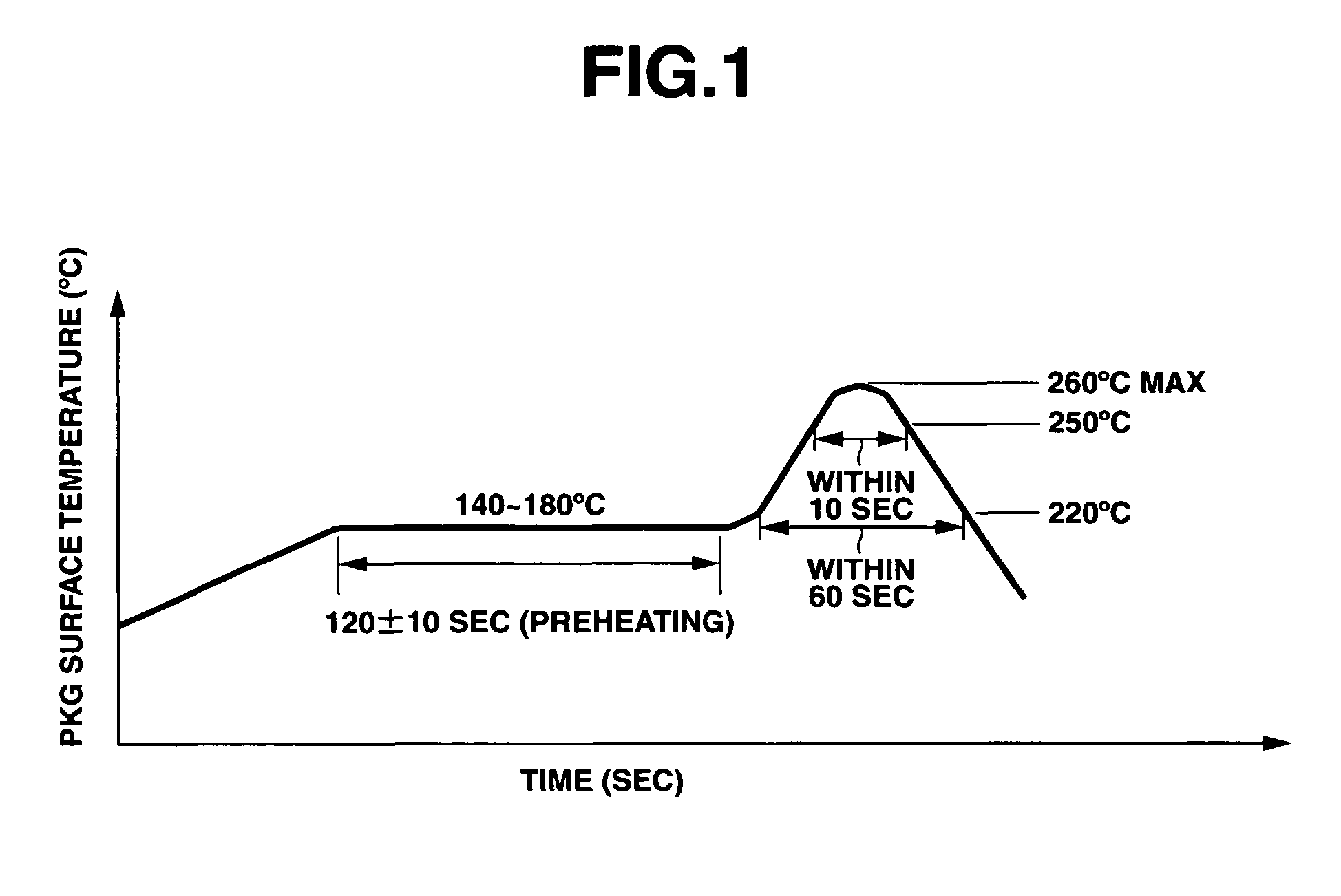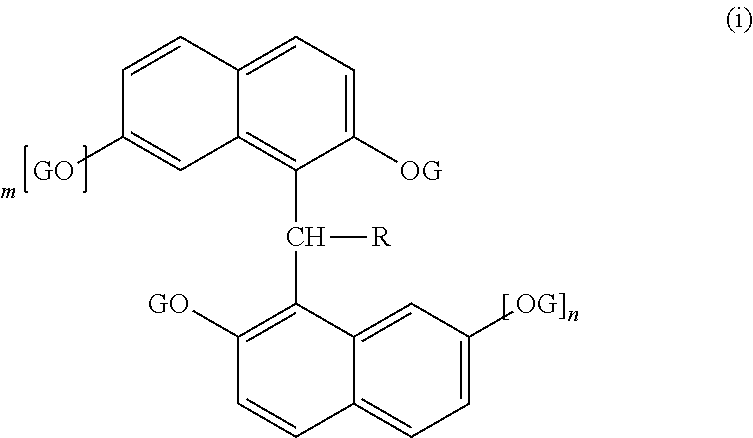Semiconductor encapsulating epoxy resin composition and semiconductor device
a technology of epoxy resin and semiconductors, which is applied in the direction of synthetic resin layered products, transportation and packaging, chemistry apparatuses and processes, etc., can solve the problems of warpage after molding becoming more serious and compromising the flow during molding, and achieves low linear expansion coefficient, minimal moisture absorption, and high tg
- Summary
- Abstract
- Description
- Claims
- Application Information
AI Technical Summary
Benefits of technology
Problems solved by technology
Method used
Image
Examples
example
[0064]Examples and Comparative Examples are given below for further illustrating the invention, but are not intended to limit the invention. All parts are by weight.
synthesis example a
[0066]In a nitrogen atmosphere, 8.6 g (214 mmol) of sodium hydride was suspended in 50 ml of tetrahydrofuran (THF) at 0° C. To the suspension, 19.8 g (211 mmol) of phenol in 75 ml of THF was added dropwise, followed by 30 minutes of stirring. Further 12.0 g (34.5 mmol) of hexachlorotriphosphazene in 75 ml of THF was added dropwise, after which the solution was heated under reflux for 18 hours. The solvent was distilled off in vacuo, and methanol was added to the residue whereupon crystals precipitated. The crystals were washed with methanol and water, obtaining 23.8 g of white crystals. The product had the following formula.
[0067]
synthesis example b
[0068]In a nitrogen atmosphere, 4.6 g (114 mmol) of sodium hydride was suspended in 50 ml of THF at 0° C. To the suspension, a solution of 9.7 g (104 mmol) of phenol and 0.40 g (1.7 mmol) of 4,4′-sulfonyldiphenol in 50 ml of THF was added dropwise, followed by 30 minutes of stirring. Further 12.5 g (36.0 mmol) of hexachlorotriphosphazene in 50 ml of THF was added dropwise, after which the solution was heated under reflux for 5 hours. The solvent was distilled off in vacuo, 150 ml of cyclohexane and 57.3 g (345 mmol) of methylhydroquinone were added to the residue, and 27.3 g (345 mmol) of pyridine was added dropwise. The solution was heated under reflux for 18 hours. From the reaction mixture, the lower layer of yellow syrup was decanted. This was dissolved in 80 ml of 80% acetic acid and poured into 500 ml of water whereupon crystals precipitated. The crystals were dissolved in methanol and poured into water whereupon crystals formed again. This procedure was repeated until the wat...
PUM
| Property | Measurement | Unit |
|---|---|---|
| mean particle size | aaaaa | aaaaa |
| mean particle size | aaaaa | aaaaa |
| temperature | aaaaa | aaaaa |
Abstract
Description
Claims
Application Information
 Login to View More
Login to View More - R&D
- Intellectual Property
- Life Sciences
- Materials
- Tech Scout
- Unparalleled Data Quality
- Higher Quality Content
- 60% Fewer Hallucinations
Browse by: Latest US Patents, China's latest patents, Technical Efficacy Thesaurus, Application Domain, Technology Topic, Popular Technical Reports.
© 2025 PatSnap. All rights reserved.Legal|Privacy policy|Modern Slavery Act Transparency Statement|Sitemap|About US| Contact US: help@patsnap.com



